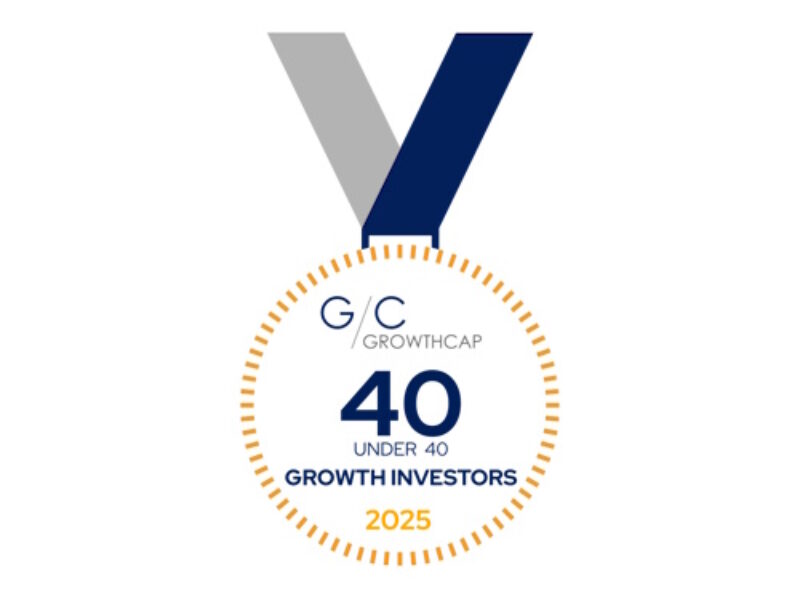Insight & Analysis | Healthcare (HC)
2023 Healthcare Trends and Our Outlook for 2024

Operational Challenges, Patent Cliffs & Biotech Funding Slowdown, and Generative AI Define 2023; Encouraging Prospects Emerge for 2024
Key Takeaways:
- The healthcare industry experienced a significant transformation in 2023, driven by three defining trends: operational challenges due to staffing shortages and evolving payment models, looming patent cliffs for pharma manufacturers and a biotech funding slowdown that impacted the pace of drug development, and the emergence of generative AI as a transformative technology.
- The rapidly evolving healthcare landscape, combined with the uncertainty caused by the broader macro-economic and geopolitical environment created a challenging M&A environment in 2023.
- Despite these challenges, we believe key tailwinds like rising and aging populations, the ongoing digitization and consumerization of healthcare, and continued innovation in the pharmaceutical and biopharmaceutical sphere make the sector a promising area for investment in 2024.
The healthcare industry saw significant change in 2023. Emerging from the shadow of the COVID-19 pandemic, the sector experienced three defining trends that we believe are reshaping the landscape for 2024 and beyond. First, operational challenges continue to exacerbate provider burnout. Second, looming patent cliffs and a biotech funding slowdown impact the drug development pipeline. And third, the industry is grappling with the transformative potential of generative AI on everything from administrative workflows, to clinical care, to pharmaceutical discovery.
As a result of these and other macro trends, the private equity deal environment in healthcare has gone through notable changes as well. While challenges persist, the outlook for 2024 holds promise, as healthcare organizations recognize the need for innovation and sustainable growth.
Top Three Trends that Defined Healthcare in 2023
We see three trends defining the healthcare sector: operational challenges driven by staffing shortages and alternative payment models; patent cliffs and funding slowdown for pharma and biotech; and the transformative potential of generative AI.
1. Operational challenges driven by staffing shortages and the rise of alternative payment models
On the heels of the pandemic and macro trends like staffing shortages and evolving payment models, healthcare providers are grappling with significant operational challenges. Nearly 150,000 healthcare professionals have left the workforce over the past two years, making it even more difficult for providers to meet growing patient demand.1 Despite efforts to boost retention and recruitment — 90% of hospitals have raised wages2 — health systems are still dealing with tight margins and declines in patient care quality. In fact, two-thirds of hospitals have been required to run under capacity, with 70% boarding patients in their emergency departments or post-anesthesia care units.2
At the same time, traditional fee-for-service payment models continue to be replaced by alternative revenue streams focused on value-based care, which emphasizes the delivery of better patient outcomes and overall health rather than simply providing services and treatments.
ACOs — or accountable care organizations — are a key component of value-based care with nearly 30% of hospitals participating in these arrangements.3 We’re seeing continued growth in ACO participation as the industry strives for its goal set by the Centers for Medicare & Medicaid Services (CMS): 100% participation by 2030.3
Value-based care is slowly gaining momentum, but making the shift isn’t without its challenges. For instance, it often necessitates investments in health IT infrastructure, care coordination, and sophisticated reporting. While these investments are intended to improve long-term outcomes and reduce costs, they can create short-term operational and financial challenges that require careful planning and resource allocation.
“Providers are finding themselves with rapidly accelerating costs at the same time as their traditional fee-for-service revenue model is being upended,” said Josh Nelson, Managing Director and Head of Healthcare, THL. “This dynamic is requiring organizations to think of innovative approaches to recruiting and retaining staff, attracting patients, and ultimately reimagining the way care is delivered if they want to thrive in the new environment.”
2. Patent cliffs and funding slowdown for pharma and biotech
The pharmaceutical and biotech industries faced their own set of challenges in 2023, including patent cliffs and a funding slowdown. The loss of exclusivity on drugs is expected to make a significant impact on pharma revenues. Patents for nearly 200 drugs will expire by 2030, putting approximately $236 billion in pharma sales at risk for pharma companies big and small. In fact, over the next 10 years, revenues are estimated to decline by 46% for the world’s biggest players.4
Meanwhile, the biotech funding slowdown that began in the latter half of 2022 persisted into 2023, impacting the industry’s ability to finance new innovations.

Despite these challenges, the industry witnessed a surge in the development and approval of new drugs, particularly complex therapeutics.
In 2022, the U.S. FDA approved 37 novel drugs, the lowest number of approvals in five years.5 As of December 20, 2023, the FDA has approved 546 new molecular entities and new therapeutic biological products as well as 207 vaccines, allergenic products, and cell and gene therapies.
We believe breakthroughs in areas like cell and gene therapies signal a promising future for healthcare innovation.
“The market demand for outsourced pharma services remained very robust in 2023, with large pharma continuing to invest in capabilities to maximize the global revenue of their existing portfolio assets,” said Megan Preiner, Managing Director, THL. “We are also seeing an acceleration of new therapeutic approaches that require a highly specialized ecosystem of service providers to address the increasingly complex regulatory, logistical, and technical requirements for these innovative modalities.”
3. The rise of generative AI in healthcare — and its potential to transform the industry
Generative AI was the buzzword of 2023, drumming up excitement across industries. While still in its infancy — only 6% of healthcare providers have a generative AI strategy today8 — it holds immense promise in healthcare, an industry marked by evolving regulations, administrative inefficiencies, and large swaths of siloed data.
Because of its ability to analyze data — including online patient records, physician notes, and medical images, to name a few — generative AI could ultimately improve diagnostics and care planning, aid in key pharmaceutical processes like clinical trials, and help providers streamline revenue cycle management and other time-consuming tasks. Unsurprisingly, 80% of healthcare providers are accelerating spending on IT and about 50% are actively developing a generative AI strategy.8
“While we believe that AI has the potential to fundamentally transform the healthcare industry, it is still very early days in terms of understanding how and where the use of AI will gain widespread adoption and acceptance. In the near term, AI is most likely to be successfully applied against administrative activities such as revenue cycle and scheduling optimization, and we think organizations will take a more measured approach towards clinical applications given the potential implications of mistakes on clinical care,” said Shahab Vagefi, Managing Director, THL.
Impact on the Deal Environment
The rapidly shifting healthcare landscape has had a profound impact on the private equity deal environment. While there have been headwinds, like inflationary pressures and a drop in biotech funding, we believe the sector remains an attractive space for investment. What’s more, findings from EY’s 2023 PE Pulse Industry Survey point to an increased emphasis on healthcare investing over the next 12 months, especially across pharma, IT, and other niche areas.9
“Anytime you have a market in the midst of tremendous transformation and uncertainty, as healthcare experienced in 2023, there tends to be a natural cooling of the M&A environment,” said Nelson. “There are some estimates that transaction activity is down as much as 80% relative to the past several years, which has obviously impacted valuation multiples throughout the industry, with the exception of some notable outlier examples.”
Shahab Vagefi, Managing Director, added, “The overarching theme for healthcare M&A in 2023 was ‘flight to quality.’ Businesses with tangible ROI for their solution, demonstrable speed to value, and a differentiated market position garnered multiples at, or in some cases above, what we saw at the market peak in 2021 and early 2022, whereas other deals had reduced valuation expectations or simply did not transact.”
2024 Outlook
There are many reasons to be optimistic about how the healthcare sector will evolve in 2024. On one hand, rising and aging populations ensure an ongoing need for healthcare services. In addition, the sector is still in the early stages of its digital transformation and adoption of generative AI, presenting opportunities for innovative solutions in both clinical care and research settings. Moreover, the ongoing consumerization of healthcare is creating investment opportunities for companies that prioritize patient-centered care and align with the changing preferences and needs of healthcare consumers.
“We expect staffing shortages and constrained budgets to be a long-term operating challenge for the healthcare industry,” said Vagefi. “That dynamic ultimately creates real opportunities for innovative companies with unique service offerings and technology solutions that address these needs.”
Other opportunities lie in drug development. “The rising popularity of new classes of biologics like weight loss drugs in the GLP-1 class and the expansion of indications for drugs like Keytruda show that there is still tremendous opportunity in the pharmaceuticals and biologics sector,” said Preiner. “The complexity across the value chain creates huge opportunities for investment.”
“While the interest rate environment and 2024 presidential election may create some potential headwinds this year, we believe there will be a meaningful uptick in activity relative to last year,” said Nelson. “I believe the deal environment in 2024 is tailor-made for THL’s approach: find great teams leading next-generation companies with long-term secular growth potential that are solving critical problems for their stakeholders.”
To learn more about THL’s activity in Healthcare or its successful 2023 exit from Nextech, contact THL’s Healthcare team today:
Joshua Nelson, Managing Director and Head of Healthcare
jnelson@thl.com
Megan Preiner, Managing Director
mpreiner@thl.com
Shahab Vagefi, Managing Director
svagefi@thl.com
__________
1 Addressing the healthcare staffing shortage. Definitive Healthcare. September 2023.
2 2023 State of Healthcare Performance Improvement: Signs of Stabilization Emerge. KaufmanHall. October 2023.
3 Value-Based Care: Operational Context Matters. FTI Consulting. June 30, 2023.
4 How steep is pharma’s patent cliff? PharmaVoice. June 14, 2023.
5 Notable 2023 drug approvals. Pharma Manufacturing. August 22, 2023.
6 Novel Drug Approvals for 2023. U.S. Food & Drug Administration. As of December 19, 2023.
7 2023 Biological License Application Approvals. As of November 27, 2023.



